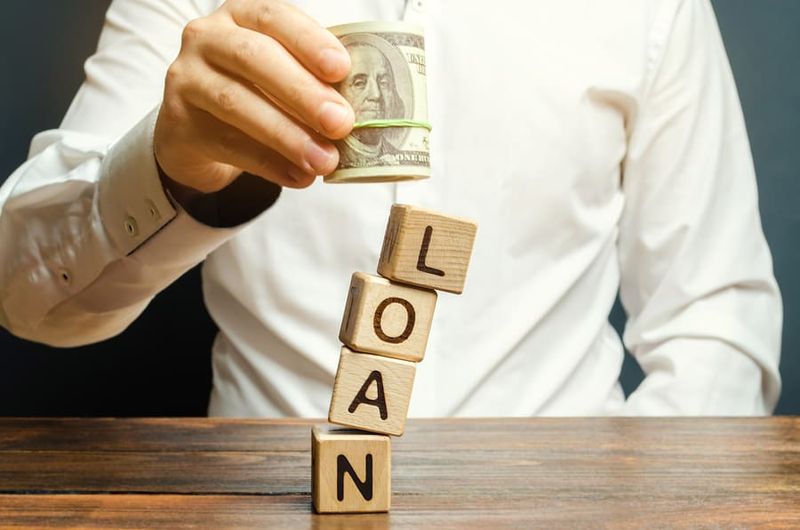10 Potential Pitfalls of Unsecured Personal Loans

Unsecured personal loans might seem like a quick fix for financial needs, but they come with their own set of challenges. Unlike secured loans, which are backed by collateral, unsecured loans rely solely on your promise to repay. While they offer easy accessibility and faster approval, the hidden costs and risks can catch many off guard. Understanding these pitfalls could save you from financial missteps and ensure you make informed decisions. Here are ten potential pitfalls of unsecured personal loans, each with its own unique challenges and implications for borrowers.
1. Higher Interest Rates

Interest rates on unsecured loans can skyrocket in the absence of collateral. This makes borrowing more expensive over time, especially for those with mediocre credit scores. Borrowers often find themselves trapped in a cycle where they’re unable to make a dent in the principal amount.
While the absence of collateral might seem appealing, the higher interest is a significant trade-off. Over time, these rates can accumulate, turning a manageable loan into a financial burden. Many find themselves paying more in interest than the original loan amount.
For those hoping to improve their credit, high interest can reverse progress. It can lead to increased debt and potential financial distress.
2. Fixed Repayment Schedules

The rigidity of fixed repayment schedules can put borrowers in a tight spot. Unlike credit cards, unsecured loans demand consistency, with set monthly payments. Missing even one payment can have severe repercussions on your credit rating.
This inflexibility can be daunting for those with fluctuating incomes. The pressure to meet these deadlines can strain finances, making it harder to manage unexpected expenses. Borrowers often find themselves prioritizing loan payments over essential needs.
Fixed schedules require disciplined budgeting. Without a safety net, any disruption can lead to spiraling late fees and collection efforts, causing long-term credit damage.
3. Prepayment Penalties

Prepayment penalties can be an unexpected hurdle for proactive borrowers. While paying off a loan early might seem like a responsible decision, some lenders impose fees that diminish the benefits of financial diligence.
These penalties can feel like being punished for good behavior. Borrowers aiming to reduce their debt quickly find themselves reconsidering their strategies. Instead of reaping savings, they encounter additional costs.
Understanding loan terms is crucial before signing. Hidden fees can derail financial plans, making it essential to weigh the pros and cons of early repayment against potential penalties.
4. Origination and Hidden Fees

Origination and hidden fees can make loans unexpectedly costly. Many borrowers are surprised to find that the amount they receive is less than what they applied for, due to these deductions.
These fees can add up, increasing the overall cost of the loan. Borrowers often feel blindsided by charges they didn’t anticipate, leading to frustration and financial strain. It’s crucial to read the fine print and understand all costs involved.
Transparency from lenders is key, yet often lacking. Borrowers must ask the right questions to avoid being caught off guard by additional charges.
5. Limited Borrowing Amounts

The lack of collateral in unsecured loans often results in limited borrowing amounts. This can hinder plans for big expenses, like home renovations or debt consolidation.
Lenders are cautious when there’s nothing to repossess in case of default. Therefore, they offer smaller sums, which might not cover the borrower’s needs. This limitation can lead to seeking multiple loans, compounding debt issues.
Borrowers should evaluate their financial goals realistically. Understanding the constraints of unsecured loans can guide better decision-making and prevent over-reliance on multiple sources of credit.
6. Easy Approval = Easy Debt Trap

The convenience of easy approval can lure borrowers into a debt trap. Many find immediate access to funds appealing, but without careful planning, this can lead to unmanageable debt.
Online platforms offer loans with minimal checks, tempting impulsive borrowing. The ease of access can mask the reality of repayment challenges, leaving borrowers in a cycle of debt.
Responsible borrowing requires foresight. Understanding the terms and assessing repayment capabilities can help avoid the pitfalls of impulsive loan decisions.
7. Impact on Credit Utilization

Unsecured loans can affect credit utilization, impacting overall credit scores. While separate from credit card debt, loans add to total debt load, influencing credit health.
Borrowers might underestimate the impact of additional debt. Taking on new loans can temporarily lower credit scores, complicating future credit or loan applications.
Understanding credit dynamics is essential. Borrowers should assess how new debt fits into their broader financial picture, maintaining a balance between credit utilization and overall financial health.
8. Risk of Falling for Predatory Lenders

Predatory lenders often exploit those seeking unsecured loans, especially through enticing ads for “no credit check” offers. These can lead to scams or loans with abusive terms.
Unsuspecting borrowers may find themselves entangled in agreements they can’t sustain, resulting in financial turmoil. The tactics of predatory lenders can include hidden fees, exorbitant rates, and deceptive practices.
Vigilance is crucial when exploring loan options. Potential borrowers should verify lender credibility and be wary of deals that seem too good to be true, protecting themselves from predatory traps.
9. No Safety Net in Default

Defaulting on an unsecured loan can lead to severe consequences, unlike the repossession in secured loans. Borrowers face risks like lawsuits, wage garnishment, and long-term credit damage.
Without assets as a safety net, default penalties can be more daunting. Legal actions can add stress and financial burden, complicating attempts to regain stability.
Preventing default is crucial. Borrowers should have contingency plans and open communication with lenders to explore alternatives, such as refinancing or restructuring, to avoid drastic measures.
10. Emotional and Financial Stress

Unsecured loans can bring about significant stress, especially when repayment becomes challenging. The burden of debt can lead to anxiety, affecting personal relationships and overall well-being.
Borrowers might feel trapped, with the pressure to meet payments overshadowing daily life. This stress can exacerbate financial issues, turning temporary challenges into long-term problems.
Seeking support and managing stress is essential. Borrowers should explore financial counseling or support groups to handle the emotional toll and develop effective repayment strategies.

Comments
Loading…